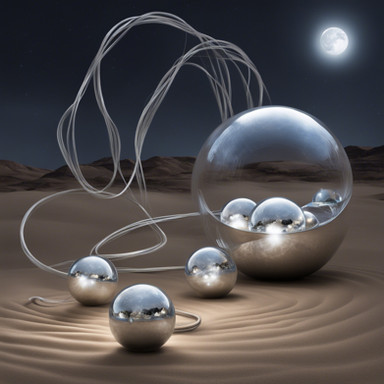HOME | DD
 Neframe — Colossus
Neframe — Colossus

#alienwildlife #ecosystem #mountainscape #sciencefiction #wildlife #giantcreature
Published: 2018-12-24 21:42:15 +0000 UTC; Views: 418; Favourites: 5; Downloads: 3
Redirect to original
Description
Thanks to a combination of only 0.1 G gravity and nearly 10 atmospheres of pressure, the Sepentin colony of Thusari is home to some of the largest terrestrial and aerial life forms in the known galaxy. The moon´s atmosphere has a 'heavier' composition than most habitable worlds, achieving a density much higher than even high-gravity worlds can muster, as well as being filled with areal plankton- and algae-like life. As a drawback, the air is just barely breathable for non-native life, with non-augs usually being recommended to stay inside the controlled-environment archologies and instead explore through remote-neural-link frames.
At sea level, the pressure is high enough for oxygen to become toxic to all known native and non-native life forms, producing a wide 'death zone' between the lively seas and mountain forests and air column. When this happened is currently unknown, but most theories speculate that this heightening of pressure occurred after life had already left the seas.
When it was first surveyed by the Sepentin Meritocracy decades after the Venomairie invention of the Jump Drive the readings of the planet were initially dismissed as system malfunctions, as it showed signatures consistent with carbon-based water-soluted life in what looked to be a toxic atmosphere. Subsequent surveys showed similar readings again, and after forty years it became clear that some of these lifeforms were far larger than previously though possible for any type of mobile organism. Once accurate atmospheric composition data and orbital mapping had been completed, the Queshaan-Vethna corporation started setting up science outposts for both their own investigations into the massive fauna and flora and to lease to other RnD concerns, eventually growing into a proper colony.
With a current population of 43 million, the Sepentin Flotillina have set up significant anchorages in the lifeless 'death zone', as well as several independent extraction/production companies, with some 400 warships coming to and fro at any given moment and yards for up to 800.
The most striking aspect of the areal ecosystem is the Grazers [middle-right of the picture] (sci.Balenus Aerialis, Tienchïeri in Sepentin Basic), massive mammaloid vertebrates that are kept afloat through a combination of active 'swimming' with the four large fins, and a massive gas bladder making some 60% of the animals internal volume. While slower than any sapient can run, and Se´kayn can fly, this is of little concern to them as the aerial animals and plants they graze on are carried by the winds and unable to move freely, allowing Grazers to filter feed efficiently and grow to massive sizes, some species reaching lengths of over 120 metres and massing over 290 tons, with most species ranging around 70 metres and 140 tons.
One of the few animals that prey on Grazers is the Rippers [left in picture] (Kaarentier in Sepentin Standard); highly territorial, semi-areal, pack omnivores that rely on active flight to reach, in the thick atmosphere, staggering velocities sometimes exceeding 70 kph, and who use pharyngeal jaws lined with razor-sharp teeth the shear off bit-sized chunks of their prey; while their intelligence is limited larger packs commonly bite primarily along the spine of Grazers when the quarry is within their territory, eating through muscle and rupturing the gas bladder to let the animal fall to the ground, usually killing it quite spectacularly after the often many kilometers long fall. Packs of Rippers often range between thirty and fifty individuals. Rippers are mammaloid, and give birth on the ground as it takes over a standard year for the pups to reach sizes where they can fly themselves. Adult Rippers are usually around 7 to 8 metres long and weigh 2 tons, with some species reaching 13 metres and 6 tons. Their diet consists of most small ground animals, plants, fungi, and various Sky Haulers, like the Grazers.
The Kugina [lower middle], massive quadrupedal mammaloids, are one of the most impressive families on the world, consisting of some twenty different species over three continents and thirteen mountain chains. With life-cycles over a century long, they are very timid and tranquil despite their size, spending most of their time eating of the fungoid forest-like growths covering most of the planet´s plant-rich regions and slowly retreating if approached by vehicles. While most Kugina reach 'only' sizes of 160 metres long and 400 tons, the largest species have been known to exceed 250 metres and 620 tons, reaching a height of over 130 metres they are able to traverse the toxic lowlands while keeping their heads above the danger, thus spreading them to all regions on the same continent. The Kugina pictured are two Kugiesni Quriek; an adult of about 470 tons and 130 years, and their 12-year-old cub of 'only' 40 tons. All Kugina species are hermaphrodites, and most have been observed to possess limited parthenogenesis.



























